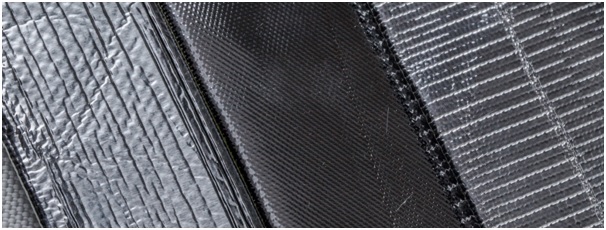What is Laminated Fabric?
Laminated fabrics go through two stages of manufacture. To begin, E-glass or SiO2-glass (silica glass) fabrics are woven to the customer’s specifications, with the type of glass indicating the material’s thermal resistance.

The fabric is coated with a finish at the second stage of manufacture, which improves or adds new physical properties to the fabric, such as flame resistance, thermal radiation reflection, abrasion resistance, and so on.
Fiber Glass Laminated Fabrics:
It is weaved by warp and weft yarn while looking at a certain set of rules. It serves as an excellent non-metallic material. It is corrosive, acid and alkali resistant with good results of heat resistance. It has good mechanical strength. The specifications that these fibreglass laminated fabrics include is of thickness up to 0.14mm – 3.0mm. Width 1000mm – 2000mm. The Color of it is white, tan (heat-treated).
E-glass fabrics are the most common type of fabric used for coating and laminating. These textiles are less expensive than SiO2-glass, and the technical properties gained during the finishing process allow for a wide range of applications as well as a fire resistance of about one hour, which is regarded high. Because of its longer service life, greater thermal resistance, and fire resistance of up to two hours, SiO2-glass coated and laminated fabrics are more often employed as thermal insulation materials.
Laminated textiles are more commonly employed in automotive, pipe and cable insulation, shipbuilding, and other industries, whereas coated glass fibre fabrics can be utilized for thermal and acoustic insulation as well as fire protection.
Coated and laminated fabrics have the following characteristics:
- High temperature resistance up to 1000°C and beyond
- Up to 2 hours of fire resistance
- Flexibility and abrasion resistance
- Smoke and gas are impervious to it.
- Liquid metal resistance
- Resistance to influences from the environment
Hot Melt Gravure Process Benefits:
The Hot Melt Gravure process benefits the fabric in several ways. This process offers flexibility for the fabric. The lamination’s that are gone through this process retains a high degree of handle softness. This process makes the perfect lamination process for both including the high performance and lightweight technical fabric composites. The highest fabric which is best in quality is surely made with the process of hot melt gravure. The hot melt gravure process has the highest production rate which is relatively more than the other methods. This method can be used for large amounts of fabric to be made easily. The method does not compromise on the quality and maintain its standards.
Uses of Laminated Fabric:
Fire safety has always been a priority, and the best solutions are sought and discovered to ensure that people are kept as safe as possible. Fire safety in public places, such as schools, train and metro stations, supermarkets, concert halls, and so on, has grown increasingly significant in recent years across Europe. Whereas in the past, metal doors, special walls, and coatings were utilized to defend against fire, coated and laminated glass fibre fabrics are now widely employed.
One of the most extensively represented end products of coated and laminated fabrics is smoke and fire, often known as fire curtains. In the case of a fire emergency, public authorities and private sector companies are progressively putting in place safeguards to protect the public and employees. Along with fabric and textile possibilities, building leaders, architects, and designers prefer coated and laminated fabrics. Fire curtains can be placed into wall arches and ceilings because of their strong fire resistance, smoke resistance, and flexibility, allowing for more efficient use of space. The curtains do not require any walls or other metal/concrete structures, making this a cost-effective alternative.
Coated and laminated fabrics are used in a variety of applications, including smoke and fire curtains. Flame-resistant fire suits and other protective equipment are also made out of laminated textiles.

Am happy to join